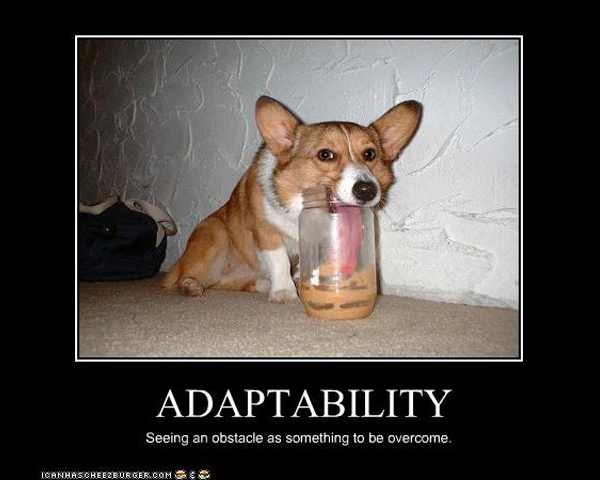New business initiatives, new technology, new processes and procedures, mergers and acquisitions, and leadership changes, all require new behaviors and new ways of doing things. This means transforming your business operations in some way.
Most people don’t like change and transformation.
As the Borg say, “Resistance is Futile.”
Perhaps, but resistance can be minimized and the speed of commitment and adoption to transformation increased – increasing your ability to accelerate and achieve success. Operational change and transformation are inevitable, but that doesn’t mean it has to be painful or costly.
Change and transformation initiatives can go one of two ways…success or failure. When leading or managing change we can often feel that we are fighting an uphill battle – personally and professionally. Change itself is a process – managing it, leading it, achieving it is also a process.
So how do you manage operations transformation and change successfully?
Here are 5 tips to reduce some costs and anxieties associated with operations transformation and change:
BUILD AND NURTURE RELATIONSHIPS
Building and nurturing relationships with impacted stakeholders – internal, external, and customers – is key to success. It’s how you build trust – and trust is a surefire way to help change go more smoothly. Change leaders need a face. They need a presence. Cameo appearances or a name without a face (and a personality to connect it with) won’t yield the trusted relationships needed for success. Building trust allows people to be more open and honest with sharing fears and concerns associated with the transformation and is more likely to provide an atmosphere where people are willing to share the type of data and feedback you need to develop successful solutions for positive change and improved operations.
SEGMENT YOUR AUDIENCE GROUPS
Communication – timely and accurate communication – is imperative to successful operations transformation and change. Though it ultimately depends on what type of change is going on within your organization – in most cases you need to communicate different messages (or slightly modified yet consistent messages) to different audience groups at different times. For people to buy-in to change you need to tell them what they need to hear, how they need to hear it, the way it needs to be heard. The impacts, quick wins, and WIIFM (what’s in it for me) messaging is going to be different for each stakeholder group. To make sure you can target messaging correctly you’ll want these audience groups segmented at the onset and you’ll want the needs and concerns of these different audience groups identified at the onset – this should occur as part of change readiness.
BE VISIBLE AND ACCESSIBLE
If you’re a sponsor or champion of the change and transformation then you best be comfortable with being visible and have a personality that is approachable. You can’t be just a name on an organization chart or a ‘title.’ Organizations often make the mistake of assigning sponsors based on role and title and not on availability, personality or desire to lead change. The less you’re a visible sponsor, the less you energetically promote the change or the more you personally resist, the less likely stakeholders are to engage and commit to the change and transformation. Lead by example. The behavior people see is what most consider acceptable and what most will follow – or not follow. You need to be on the ground. You need an active role. You need to be personally committed to success. You need visibility.
FOLLOW-THROUGH
Say what you mean. Mean what you say. Do what you say. Follow through is imperative for success. Lack of timely follow thru impacts trust, sends a bad message, slows the change process, and limits relationship building. Not following through in a timely manner sets a level of distrust not to mention pushes back timelines and contributes to increased project costs and decreased performance from stakeholders. People notice. Be helpful don’t be a hurdle.
DO THE HARD WORK
TADA! POOF! Positive change has occurred! Ok…maybe in lala land the change wizard can wave a magic wand and change is achieved successfully with all stakeholders happy. Now, back to reality! Change does not happen because someone says so. Operations don’t transform on their own or overnight. Change does not occur simply by checking off boxes. It happens because committed people take the time and effort to plan and do the hard work – personally and organizationally – needed for success. It’s hard work to learn and exhibit new behaviors that create and support positive change and transformation – but it’s worth it if you want success.
Short and sweet – operations transformation and change does NOT happen overnight. Even the smallest change within an organization can take months. Large scale? You may hate to hear this, but, it can take years! Planning. Commitment. Patience. Small steps. Quick wins. Long journey…success!
Need help transforming your operations or managing change? Contact us.
Want to learn more schedule our workshop – Change Management 101.
About Scott Span, MSOD, CSM: is CEO at Tolero Solutions. His focus is – people. He is a Leadership Coach & People Strategist, Communications and Change Management. He supports leaders, teams, and individuals to survive and thrive through personal and professional change and transition. He supports organizations to engage and retain talent and wow customers, achieving success through people, creating places where people enjoy working and customers enjoy doing business.
Email | Website | LinkedIn | Twitter | Blog | Facebook
*All Rights Reserved. Reproduction, publication, and all other use of any and all of this content is prohibited without authorized consent of Tolero Solutions and the author.


